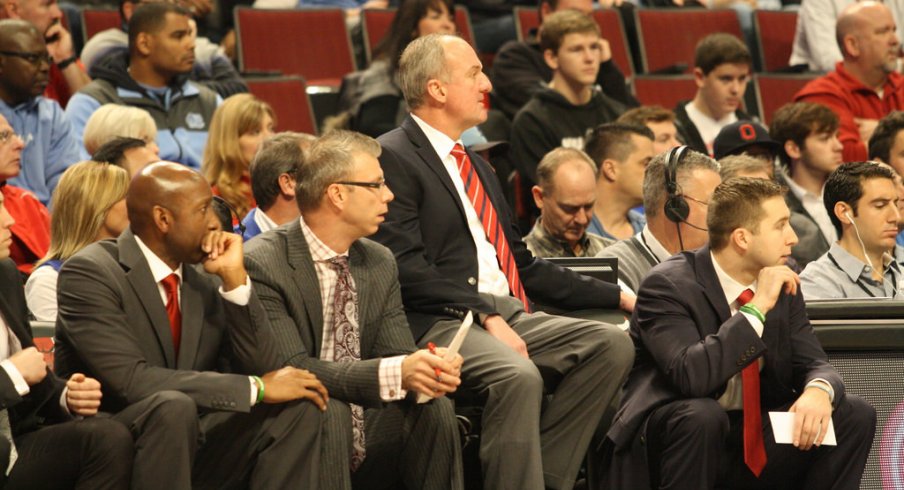When the Buckeyes began the 2014 season, they were counting on games against North Carolina and Louisville to gauge the team's progress. Seven weeks into the season, we still don't know how good they are.
"We've got two losses to two really, really, really good basketball teams, great basketball teams," Thad Matta said yesterday after losing to North Carolina. "I think to put ourselves in that position, we've got to look ourselves in the mirror and say, 'Hey, we're not there yet.' Which is fine, but we've got to look at all the little things that we have to do to get better and get that established."
Losing to North Carolina won't hurt Ohio State; the nonconference schedule will. The Buckeyes are a better team than they were at the start of the season, but a weak schedule hides that.
| Year | Rank (of 351) |
|---|---|
| 2008-09 | 243rd |
| 2009-10 | 242nd |
| 2010-11 | 248th |
| 2011-12 | 244th |
| 2012-13 | 280th |
| 2013-14 | 282nd |
| 2014-15 | 311th |
According to the Pomeroy rankings, Ohio State's strength of schedule is 311th out of 351 Division 1 teams. None of the teams Ohio State has beaten is in the top 100; after Marquette, Ohio State's second-best win is either James Madison, High Point or Sacred Heart.
In past years, scheduling weak to compensate for a strong Big Ten would make sense. This year, the Big Ten is struggling mightily. Michigan State, Indiana, Nebraska and Michigan have repeatedly embarrassed themselves against bad teams, and the rest of the conference hasn't picked up the slack. Ohio State's overall strength of schedule will be middling at best.
Scheduling weakly makes sense for teams that are trying to create momentum for a program. Take Penn State, the worst team in the Big Ten over the last five years. The Nittany Lions scheduled the 300th toughest schedule in the country, and it has led to a soft 11-1 record.
Ohio State isn't an upstart program, though: it's a powerhouse expected to make noise in the NCAA Tournament. To land a high seed the Buckeyes need to impress the selection committee with quality wins, and North Carolina A&T just doesn't move the needle.
As a team with four freshmen in the lineup, it's important for the Buckeyes to jell. Sam Thompson said something similar after losing to Louisville: “It’s our first time... a lot of new guys, a lot of new faces that have never put this jersey on. We’ve just got to grow from it."
While playing teams like Colgate or UMass-Lowell reduces the pressure on new players, it fails to challenge them the way tough teams would. With only two top 100 opponents in 13 games, Ohio State is not preparing itself well for the caliber of Big Ten teams or the NCAA Tournament.
Having a weak nonconference schedule affects more than the win-loss record. The Buckeyes have a hard time filling Value City Arena, which has yet to draw 15,000 fans this year. With more games against middle-tier teams – Butler, Green Bay, LSU, Morehead State to name a few – the Buckeyes could offer their fans a more entertaining product at no extra cost, or a profit if a stronger home schedule draws more fans.
In the end, it's Thad Matta's business which teams to schedule. Playing weak nonconference slates has worked out well for him at Ohio State, and future schedules will likely have 2-3 big name opponents and 9-10 nobodies. Competitive nonconference games could make the Buckeyes better and build more buzz for the program – if Matta is willing to risk more losses to do it.


